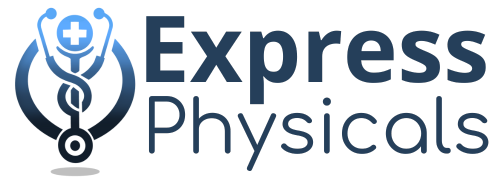Every licensed driver knows what a basic physical feels like. But if you drive commercially, you’ve probably heard about the DOT physical. What exactly sets it apart from a standard checkup? And why does it matter?
What Is the Purpose of Each Exam?
Regular Medical Exam
A standard physical—typically performed by your primary care provider—is designed to assess your overall health. It’s personalized, based on your age, lifestyle, and medical history. It may include labs, screenings, and referrals depending on your needs.
DOT Physical Exam
A DOT physical is mandated by the Federal Motor Carrier Safety Administration (FMCSA) and required for anyone operating a commercial motor vehicle (CMV). The goal is simple: ensure you’re medically qualified to safely drive long distances, often under physically demanding conditions. This exam follows a federally standardized format and includes criteria set out by FMCSA regulations under 49 CFR Part 391.
Who Administers the Exam?
A regular exam is typically handled by any licensed medical doctor, nurse practitioner, or physician assistant. A DOT physical, however, must be conducted by a Certified Medical Examiner (CME) who is listed in the FMCSA National Registry. These providers receive specific training to evaluate a driver’s fitness to safely operate a commercial vehicle.
Exam Elements Compared Side by Side
| Component | Regular Physical | DOT Physical |
|---|---|---|
| Performed By | Any primary care provider | Certified Medical Examiner (CME) |
| Purpose | Preventive health and wellness | Ensuring driver fitness and public safety |
| Urinalysis | Optional (based on symptoms) | Required (checks for glucose, protein, specific gravity) |
| Vision Requirements | Evaluated but not standardized | Must have 20/40 vision in each eye (with or without correction) |
| Hearing Test | Not standard | Required (whisper test or audiogram) |
| Medical Certificate | No formal certificate issued | Medical card issued for CDL validity |
| Record Submission | Internal to provider | Reported to FMCSA and employer (where applicable) |
| Duration of Validity | 1–2 years (varies) | Up to 2 years (can be reduced based on health findings) |
Why the DOT Physical Is More Regulated
Unlike a general exam, the DOT physical is bound by federal law. That means there’s no room for interpretation—examiners must follow the official DOT guidelines. Certain medical conditions, such as epilepsy, insulin-dependent diabetes (under certain criteria), and cardiovascular disorders, can lead to disqualification unless exemption protocols are followed.
Per the FMCSA’s Medical Advisory Criteria, conditions are evaluated not just on diagnosis but on how well they are controlled and the potential risk they present while operating a CMV. This risk-based approach is central to the DOT physical philosophy.
Insurance, Payment, and Employer Responsibility
Many insurance plans cover routine physicals, especially when tied to preventive care. DOT physicals, however, fall outside that category. They’re often considered employment-based evaluations. Some employers pay for the exam, while others require drivers to cover it. Prices range from $75 to $150 depending on location.
What Drivers Need to Bring
Drivers should arrive at their DOT exam with the following:
- List of current medications with dosages
- Any required medical clearance letters (e.g., for sleep apnea, cardiac issues)
- Eyeglasses or hearing aids, if prescribed
- Past medical documentation if managing chronic conditions
Understanding the Right Exam for the Right Job
The DOT physical is not meant to replace your regular checkup—but it does serve a higher level of scrutiny. It ensures that those behind the wheel of the nation’s most powerful vehicles are in shape to protect lives and manage long hours and heavy responsibilities.
If you’re pursuing or maintaining a CDL, understanding the differences isn’t just helpful—it’s essential. Be ready, be informed, and stay on the road legally and safely.
